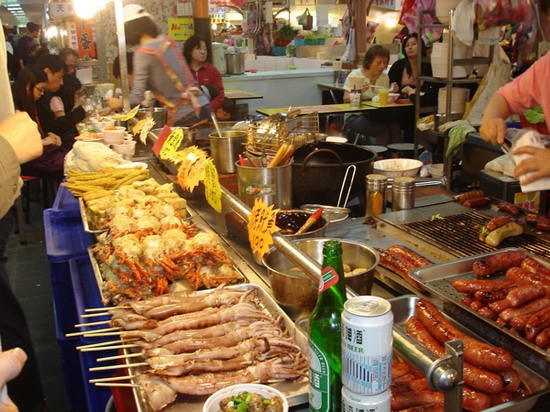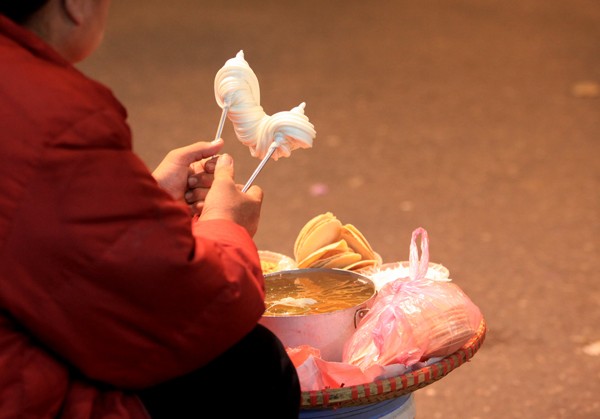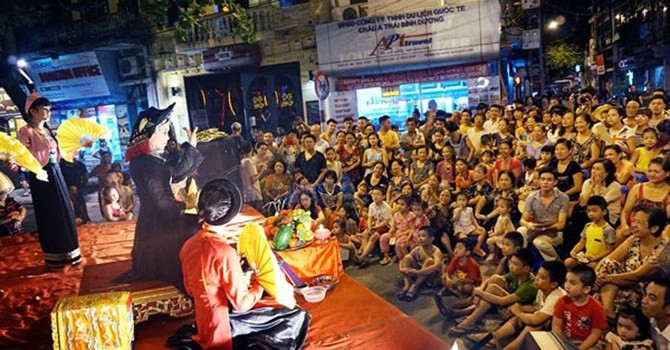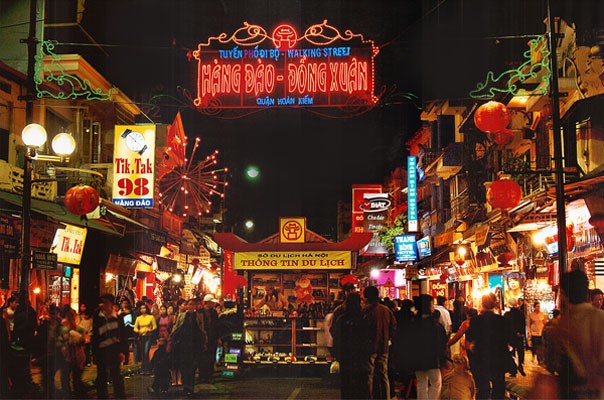(VOVworld) - As the oldest continuously developed area of Vietnam, Hanoi's Old Quarter has a history that spans 2,000 years and represents the eternal soul of the city. Located between Sword Lake, the Long Bien Bridge, a former city rampart, and a citadel wall, the Old Quarter is considered the heart of the capital city. Hanoi’s Old Quarter was recognized as a national relic in 2004, a great honor and also a challenge for the local residents and local authorities to preserve and promote its values.
In 2004, the first pedestrian streets in Hanoi were inaugurated, where visitors can walk, shop, and sample street food in four streets blocked off pedestrians: Hang Ngang, Hang Dao, Hang Duong, and Dong Xuan. For four years, the pedestrian streets in the Old Quarter have been drawing a growing number of both locals and tourists. Thu Huong lives in Hanoi: "The night market features a diversity of goods, from clothes to personal accessories to household items and food and drinks. I can find almost everything I need here. And I love the idea of a walking street. The absence of vehicles and public transportation makes the air a lot fresher. More importantly, walking brings people closer to one another. I enjoy wandering around with my boyfriend on the weekend. We chat about what has happened that day, and comment on the products displayed on the street"
Last April, Hoan Kiem district authorities submitted a project to the Hanoi Municipal People’s Committee for approval. The project expands the pedestrian streets around Hang Dao – Dong Xuan. The streets will be reserved for three nights a week – Friday, Saturday and Sunday - from 7pm in summer and 6pm in winter until 12pm. Pham Tuan Long is Vice Chairman of the Old Quarter’s Management Board: "The idea of pedestrian streets was initiated by Hoan Kiem district authorities long ago. The new19-hectare pedestrian area is located at the centre of the first-class preservation zone of Hanoi’s Old Quarter, which contains many architectural works of the 18th and 19th century and many cultural relics. We want to take advantage of Hanoi’s cultural values especially its culinary culture."
 |
Visitors to the pedestrians streets will find plenty of the most famous Hanoi street food and traditional dishes such as Bun Thang (Rice vermicelli soup served with shredded chicken, fried egg, meat dumpings and mushrooms), La Vong grilled fish, Pho (noodle soup served with beef or chicken) and Bun cha (rice noodles served with grilled pork). Vietnamese cuisine is among the world’s finest and what you have an opportunity to taste here will send your taste buds to heaven. Claire and her husband, from France, are having their honeymoon in Hanoi: "We’ve been eating at one of the restaurants in this street and been walking around. I’ve tried pigeon with chilly and lemon, some noodles, and Vietnamese coffee. The spice added to the food here is different from what we have in our hometown and it’s very nice. And you know, in France, we don’t have so many people in the street in the evening like this and it’s so lovely to see many children walking by night"

Vietnamese “stretching candy” or kẹo kéo
|
It’s not necessarily complicated dishes that attract the tourists. Simple traditional food like Vietnamese “stretching candy” or kẹo kéo, is sold from a colorful cart, with a big umbrella. The name of this candy describes it exactly. The longer you stretch it, the thinner the candy! Richard, a French tourist, couldn’t hide his excitement: "It’s a white paste, with some coconut, stripe, I would say, and peanuts. This is really unusual for us. We like candies a lot and this is great to taste it tonight in Hanoi. Actually, this is the 3rd day we spent in Hanoi and we’ve been walking around here also for the third time. We’ve just had hot pot, which is delicious. And we really like Asian food, particularly Vietnamese food"
Pedestrian streets are familiar in many countries, displaying consumer goods, food and drinks. Pedestrian streets in Hanoi’s Old Quarter also showcase cultural performances. There are two mini shows every week, featuring a variety of music, from Vietnamese traditional music to classical symphonies.
20-year-old Le Duc Manh is from Hanoi: "My rented apartment is only one block away from here, I come here every single weekend. I often watch shows that people are doing, at around 8 or 8h30. All shows are non-profitable so everybody is free to join. They often invite singers and artists to sing or play the musical instruments. The singers are fabulous, friendly and have a lot of energy. Personally, the traditional music really interests me. I’m a young guy, hanging out with foreign people, and sometimes I just forget about the old stuff. But when I walk around here, I could look back at Vietnam’s tradition. It makes me feel so good about myself, nostalgic, I miss my home."
62-year-old Trinh Thi Sinh couldn’t deny her feelings: "Since the opening of the new walking streets, local residents have become a lot more excited. I love to watch the traditional music shows every week, especially the Vietnamese pre-war music. It reminds me of my time as a youth volunteer and the contributions of my generation to the nation. I couldn’t stop my tears, thinking about my friends who sacrificed their lives on the battle field and will never come back"
 |
Established in 1450, Huong Tuong temple is located in the middle of the pedestrian area. It honors Nguyễn Trung Ngạn, a governor of Thang Long, the former name of Hanoi. The temple’s front area is a place where the music shows take place every week. The music varies from Ca tru, or ceremonial singing, and Chau van or spiritual singing, to "Quan Ho" singing – a typical form of Vietnamese folk duet singing that originated in Bac Ninh Province. Nguyen Thuy Ngoc is also from Hanoi. "My family finds it very relaxing to walk around the Old Quarter every weekend. I’m proud to see Hanoi people working together to preserve Vietnam’s beautiful traditions. I was so impressed by the Chau van or spiritual singing performances that I couldn’t take my eyes off the artists. My two little sons often ask me to bring them here, where they can watch artisans making “Tò he" toys, tiny figurines fashioned from colored rice dough"
 |
The pedestrian streets shine bright at night with the installation of decorative lights. High-voltage lights are used to light some historical and cultural relics. Licensed vendors erect stalls in the street and itinerant vendors are banned. There are seven licensed parking lots with a total area of nearly 650 square meter to accommodate the motorbikes.
The Dong Xuan Joint Stock Company will pilot the additional pedestrian streets within three months and phase them into full operation. Vice Chairman Pham Tuan Long of the Management Board, said: "Opening pedestrian streets inside a national relic site is not simple. It has to represent Hanoi’s culture, art, and daily life. We shouldn’t expect perfect pedestrian streets all at once. We need to make appropriate adjustments to improve it. We will continue to improve the quality of the products and services, guarantee environmental hygiene, and ensure traffic safety and social order"
Phuong Khanh